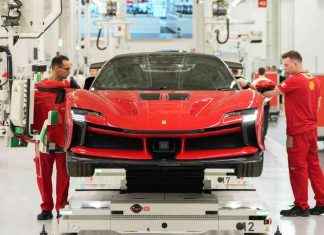The symbolism surrounding next week’s launch from a pad that has been dormant for more than five years hasn’t eluded former NASA launch director Bob Sieck.
It will be the first time a rocket takes off from Kennedy Space Center since a space shuttle last sent astronauts into space in 2011.
That’s exactly what billionaire Elon Musk’s SpaceX plans to do as early as two years from now — launch a rocket carrying humans.
“They acquired the launch pad because they want to put our astronauts in their spacecraft and launch from there,” said Sieck, who retired after a 35-year NASA career in 1999. “That is a big deal. It’s absolutely symbolic we are launching from there.”
SpaceX has targeted Feb. 18 as the next possible date for the launch of science experiments and cargo to the International Space Station aboard a Falcon 9 rocket.
An FAA source said the agency had been working with SpaceX Wednesday to “ensure the activity described in the application meets all applicable regulations for a launch license. The FAA will continue to work with SpaceX to provide a license determination in a timely manner.”
Among the experiments and cargo heading there will be an investigation into auto-docking technology that could contribute to future exploration.
But before that technology gets there, it must get off the ground and into space from 39A.
The mission will likely be closely watched, as space enthusiasts and historians anticipate a return to the pad that has seen some famous flights in space travel history.
Launch Complex 39A hosted the Apollo 11 mission, which sent Neil Armstrong and Buzz Aldrin to the Moon in 1969, marking the first time a human set foot on another planetary object.
On July 11, 2011, the 135th and final mission of the U.S. space shuttle program launched from there, sending astronauts Chris Ferguson, Doug Hurley, Sandra Magnus and Rex Walheim to the space station.
Its path to refurbishing the launchpad started in December 2013, when Hawthorne, Calif.,-based SpaceX negotiated a long-term lease on the complex.
SpaceX’s efforts to reuse the pad marks a big moment in the space industry, a Space Florida leader said.
“It brings about a new era in space,” Space Florida President and CEO Frank DiBello said. “It’s not just giving that facility a new role. It’s adding significant capability to the Cape as a whole and, in particular, it allows them to dramatically increase their launch cadence.”
DiBello’s agency, which is funded by the state, has been working toward building the space industry in Florida.
Since the shuttle program, the region has seen a shift away from government-run space activity toward commercial businesses leading the way.
DiBello said the revitalization of the launch pad is an example of that.
“This is a major piece of infrastructure that has been revitalized with private sector money,” DiBello said. “It enables the continuing growth of a new space economy.”
That “new space economy” has seen significant growth during the last year and that could continue this year.
In 2016, the satellite company OneWeb announced that it would build a new manufacturing plant next to the space center at Space Florida’s Exploration Park business center.
Jeff Bezos’ Blue Origin, meanwhile, is currently building a 750,000-square-foot facility across the street from OneWeb, and plans to move in by the end of the year.
As more businesses arrive, contractors have started to open offices, as well.
Ruag Space will bring dozens of jobs to Florida as a result of OneWeb’s presence. The company will build bring its production facility to Port Canaveral Titusville Logistic Center.
This week, Sieck will have his eyes on the launch pad he once sent rockets up from as launch director for NASA.
He says he expects obstacles, but it was just good to see activity return.
“The first time you see a launch pad work after it’s been down, you expect to have some glitches, perhaps with the hardware or the procedures,” he said. “It would not surprise me. But (the launch) is a good thing. We have got the resources and the ability, so what a shame if we didn’t use it.”
Got a news tip? msantana@orlandosentinel.com or 407-420-5256; Twitter, @marcosantana
A tornado impacted NASA’s Michoud Assembly Facility in New Orleans on Feb. 7. Only minor injuries have been reported and NASA employees and other tenants are being accounted for.
A tornado impacted NASA’s Michoud Assembly Facility in New Orleans on Feb. 7. Only minor injuries have been reported and NASA employees and other tenants are being accounted for.
A tornado impacted NASA’s Michoud Assembly Facility in New Orleans on Feb. 7. Only minor injuries have been reported and NASA employees and other tenants are being accounted for.
A tornado impacted NASA’s Michoud Assembly Facility in New Orleans on Feb. 7. Only minor injuries have been reported and NASA employees and other tenants are being accounted for.
See what’s worth looking at in the night sky for February 2017.
See what’s worth looking at in the night sky for February 2017.
This tme-lapse video shows the new work platforms for NASA’s Space Launch System rocket and Orion spacecraft installed in High Bay 3 of the Vehicle Assembly Building at the agency’s Kennedy Space Center,
This tme-lapse video shows the new work platforms for NASA’s Space Launch System rocket and Orion spacecraft installed in High Bay 3 of the Vehicle Assembly Building at the agency’s Kennedy Space Center,
Alex DeMetrick has details.
Alex DeMetrick has details.
Black holes are extremely compact and dense, generating incredibly powerful gravitational forces. Here is a quick look at at XJ1500+0154 from the Chandra X-ray Observatory.
Black holes are extremely compact and dense, generating incredibly powerful gravitational forces. Here is a quick look at at XJ1500+0154 from the Chandra X-ray Observatory.
Our editors found this article on this site using Google and regenerated it for our readers.







